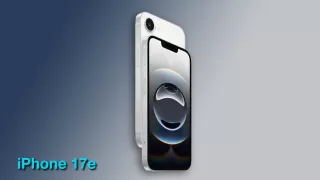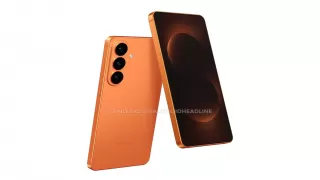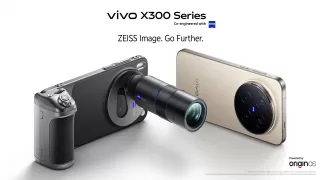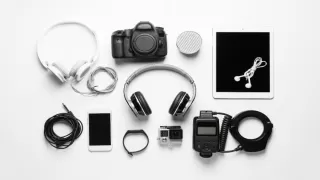Samsung has pushed wearables into a new direction with the Galaxy Watch8’s industry-first Antioxidant Index — a consumer on-wrist metric that turns lab-grade carotenoid measurement into a quick nutrition signal. Built after multi-year R&D and positioned as part of Samsung’s “preventative care” push, the feature gives users a snapshot of skin carotenoid density (a proxy for fruit & vegetable intake and antioxidant status) in roughly five seconds.
Rather than another passive fitness stat, the Antioxidant Index aims to fill a known blind spot in wearables: objective, biology-level feedback about diet. Samsung frames it as complementary to existing Watch8 stacks — sleep, vascular load, heart metrics and activity — so nutrition can be read in the same risk/context window as other aging and wellness signals. Early adopters and reviewers note this shifts the watch from “what you do” toward “how your body is responding.”
How the Sensor and Measurement Work
The Antioxidant Index is enabled by a miniaturized spectroscopy approach integrated into the Watch8’s BioActive sensor array. Instead of bulky Raman setups, Samsung uses multi-wavelength LEDs and a custom photodiode arrangement to measure light absorption and reflectance from skin carotenoids. The watch requests a deliberate fingertip-on-sensor reading (thumb recommended) and completes a measurement in about five seconds, producing a 0–100 score plus a color status such as Very Low, Low, or Adequate. Because carotenoids accumulate in skin tissue, the reading acts as a non-invasive surrogate for long-term produce intake rather than a momentary dietary snapshot.
Practically, you place your finger on the watch’s rear sensor, hold still for a short scan, and view the result in Samsung Health. Algorithms run continuous calibration to reduce hardware variance and normalize for placement and tissue optics. Taking the measurement on a fingertip helps mitigate interference from wrist capillaries and hemoglobin scattering that could otherwise affect accuracy. Users are encouraged to repeat measurements to confirm trends rather than react to single values.
Clinical Validation and Development History
Samsung developed this feature over several years, running extensive research and clinical validation trials before commercial release. Engineers built multiple prototypes and collaborated with nutrition and medical experts to ensure accuracy. Validation studies compared the watch’s spectroscopy readings with lab-based carotenoid tests, confirming reliable correlation and consistency across various skin types and conditions.
The company highlights the feature as a long-term, wellness-focused innovation rather than a diagnostic tool. Instead of treating the index as a medical measurement, Samsung presents it as a proactive step toward population-scale preventive care — a way to give users a deeper understanding of their daily nutrition impact.
What the Number Actually Means — and What It Doesn’t
The Antioxidant Index primarily reflects skin carotenoid concentration, which correlates with the intake of carotenoid-rich foods like carrots, sweet potatoes, leafy greens, peppers, and tomatoes. A higher score suggests stronger antioxidant presence and better nutritional balance. Scores are divided into zones that help users interpret their dietary sufficiency and track gradual improvements over time.
However, the feature is not a complete representation of all antioxidants in the body. It does not measure vitamin C, vitamin E, or enzyme-based antioxidant systems, nor does it fully account for factors such as UV exposure, smoking, alcohol, or stress, which can influence oxidative balance. The reading serves as a helpful behavioral guide but not a medical test.
Early Reviews, Real-World Insights, and Accuracy Notes
Early users have found the Antioxidant Index both fascinating and motivating. Many reported noticeable score improvements after increasing their intake of carotenoid-rich foods over several days or weeks. This suggests the feature can successfully track dietary progress over time. However, some users noticed calibration variations or small inconsistencies, underscoring the need for regular measurements and consistent technique.
The sensor is highly sensitive to pigmentation, which means that brightly colored foods or skin conditions could slightly influence readings. While this showcases the precision of the technology, it also reminds users that the Antioxidant Index should be interpreted as a trend indicator, not an absolute clinical value.
How to Use the Feature Effectively
To make the most of the Antioxidant Index:
- Take measurements consistently, ideally at the same time of day and under similar lighting conditions.
- Use the same finger each time to maintain measurement consistency and reduce variability.
- View your score trends in Samsung Health over weeks rather than focusing on single readings.
- If your score is low, incorporate more colorful fruits and vegetables into your diet, reduce stress, and avoid habits that increase oxidative stress.
Carotenoid levels change gradually, reflecting long-term habits rather than daily variations. Regular tracking helps reveal how your diet and lifestyle affect your antioxidant levels over time.
Limitations and Platform Compatibility
Although the Antioxidant Index is innovative, it remains a general wellness tool rather than a diagnostic device. Readings can vary based on environmental factors, skin tone, and finger placement. Samsung clearly states that the feature is designed to support healthy living rather than provide medical diagnoses or therapeutic recommendations.
The feature integrates seamlessly with Samsung Health and syncs across Galaxy devices. It is also compatible with various operating systems, allowing users to view and manage their antioxidant data across multiple platforms, ensuring that their wellness data remains accessible and secure.
Why This Matters for the Future of Wearables
Samsung’s Antioxidant Index represents a shift toward next-generation wearables that measure not just what the body does, but how it functions at a cellular level. By bringing nutrient tracking into mainstream consumer technology, Samsung has expanded the role of smartwatches from fitness companions to personal wellness tools capable of preventive insights.
This advancement could pave the way for more biochemical monitoring features in future devices — ones that assess hydration, micronutrients, and even metabolic health. For now, the Galaxy Watch8’s Antioxidant Index stands as a groundbreaking innovation that empowers users to take control of their wellness journey with real-time, meaningful data.
Ultimately, the feature transforms the smartwatch from a passive step tracker into an active partner in health — helping users see how their lifestyle choices reflect in their bodies and guiding them toward a more balanced, antioxidant-rich life.
Also Read: Satara Doctor Suicide Note Accuses MP and Police of Abuse




























